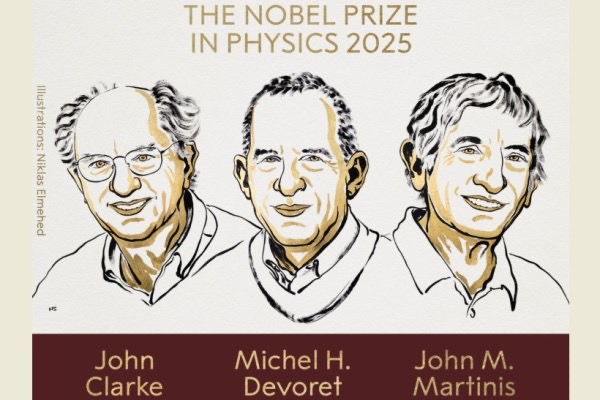Nobel Prize in Physics Announced: Unveiling a New Frontier in Macroscopic Quantum Tunneling

The Royal Swedish Academy of Sciences announced on October 7 (local time) that three scientists — John Clarke from the United Kingdom, Michel H. Devoret from France, and John M. Martinis from the United States — have been awarded this year’s Nobel Prize in Physics for revealing macroscopic quantum tunneling and energy quantization phenomena in electrical circuits. Their research demonstrated that quantum behavior is not confined to the microscopic realm but can also manifest in systems observable to the naked eye.
In the mid-1980s, the three laureates conducted groundbreaking experiments using superconducting materials to build electrical circuits containing an ultra-thin insulating layer known as a Josephson junction. Under extremely low temperatures, they observed that an electric current could “tunnel” through an energy barrier — transitioning from a zero-voltage state to a finite-voltage state — a clear signature of quantum tunneling. This discovery successfully showed that macroscopic objects can exhibit quantum properties.
Even more strikingly, the circuit absorbed and released energy not in a continuous manner, but in discrete energy levels, perfectly matching the predictions of quantum theory. This was the first experimental confirmation of energy quantization in a controllable circuit, transforming quantum mechanics from an abstract concept into an experimentally verifiable reality — and overturning the long-held belief that quantum effects exist only in the microscopic world.
Olle Eriksson, Chairman of the Nobel Committee for Physics, remarked that more than a century after its birth, quantum mechanics continues to produce astonishing breakthroughs. He emphasized that this research is not only an extension of theory but also the foundation of modern digital technology. Quantum mechanics has long been integral to electronics and semiconductors, and this experiment further advanced the practical development of quantum information science.
The trio’s work laid the groundwork for creating “artificial atoms,” whose behavior serves as a model for quantum bits (qubits). Building upon this, Martinis later applied such energy-quantized circuits as information carriers in quantum computing, using their lowest and next-lowest energy states to represent 0 and 1, respectively — a key step toward the engineering and practical realization of quantum computation.
The three laureates will share a prize of 11 million Swedish kronor (approximately NT$35.6 million). Their achievements not only brought quantum theory from abstraction to experimental and technological reality but also marked a significant milestone in humanity’s quest to understand the fundamental nature of the universe. As the Royal Swedish Academy of Sciences stated:“Their discoveries have transformed quantum physics from a theoretical framework into an observable, controllable, and practically applicable scientific force.”
- 32 reads
Human Rights
Fostering a More Humane World: The 28th Eurasian Economic Summi

Conscience, Hope, and Action: Keys to Global Peace and Sustainability

Ringing FOWPAL’s Peace Bell for the World:Nobel Peace Prize Laureates’ Visions and Actions

Protecting the World’s Cultural Diversity for a Sustainable Future

Puppet Show I International Friendship Day 2020

